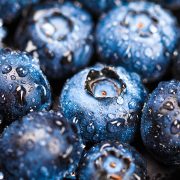New research suggests that changing the way you eat could result in your body being able to adapt to the stress of training – especially hard training!
We all realize that nothing causes the human body to adapt to training and racing except sport specific training and racing. However, through proper eating – quality, timing and quantity, you can improve your ability to adapt and absorb hard, interval type workouts.
Between food and sleep, you have THE two key elements to improvement – sleep allows the body to rejuvenate and the food provides the vitamins, minerals and macro nutrients (carbs, protein and fat) to rebuild the torn down muscle tissue, hormonal system and the cardiovascular system.
I always have my clients focus on health and wellness first and then performance. I utilize several tools to ensure that my clients are recovering adequately and consistently improving. You are either getting healthier, stronger and faster or you are not – there isn’t any middle ground. It is just a physiological fact.
What is Adaptation?
When you train, one of the adaptations is an increase in the development of mitochondria within your muscle tissue. Mitochondria are the cellular power plants which are responsible for producing a majority of the energy you use during endurance training and racing. Through consistent training, your body naturally produces chemicals that tell your body to produce additional mitochondria. This concept is not a new one, but is intriguing because we have become acclimated to the idea that training improves endurance by enhancing the production of mitochondria within the muscle tissue. But what if I told you that eating fruits and vegetables may produce the same effect? Let’s take a look.
Food to Help You Train Harder and Faster
While trying to determine the true source of obesity and develop that “wonder pill” that will help offset the negative health issues associated with obesity, research has tripped upon some intriguing results associated with endurance training and racing.
The area of research has stemmed around polyphenols and flavonoids. Please don’t get caught up with the big words and become intimidated, the concept is what I want you to take away, not the actual pronunciation! Both of these nutrients are found in fruit and vegetables and are available to the human body in many different types, but with similar functions within the body.
Resveratrol is one type of polyphenol which is found in red grapes (and also red wine!). In a 2006 edition of the science journal Cell, mice that were supplemented with Resveratrol had a 33% higher peak oxygen uptake and lasted nearly 50% longer before exhaustion.
When researchers took muscle samples of the mice, there was 2.5 times greater mitochondria within the muscles. Also increased was Citrate Cynthase, a key enzyme to producing energy within the muscles, along with additional triggers telling the muscle to produce more mitochondria.
Here is an interesting observation on behalf of the researchers. The mice that were supplemented with the resveratrol, were also able to complete more exercise on a consistent basis which in turn improved the fitness level of the mice which allowed them to longer and faster. This is a huge observation when you consider an athletes ability to get fitter involves being able to go both longer in duration (active recovery workouts) and faster (high quality interval workouts). An additional health benefit to consuming polyphenols is an improved immune system which will keep you from becoming run down, sick and away from training – hence improving your consistency. Another key factor within the world of health, wellness and ultimately performance.
Research completed here in the US has been researching another polyphenol called Quercetin. Mice that were supplemented with quercetin showed significant increases in the molecular triggers within the muscle tissue, indicating that their bodies were preparing to produce more mitochondria. After only seven days of supplementation, the mice were able to run 40% longer before becoming exhausted.
This research has validated that this supplementation has benefited individuals “less fit”. However, when you consider most athletes are running deficient in micro and macro nutrients within their bodies, this research validates that when these nutrients are present within the body, athletic performance improves.
Quercetin is found naturally in onions and apples – so maybe that saying that an “apple a day keeps the doctor away” may not be far-fetched. Research provides overwhelming evidence that quercetin can help reduce the stress of high intensity training and support the immune system. So this falls right in line with my desire to have my clients healthy first, then fit and fast!
Fruits and Vegetables Aren’t The Only Source of Improved Speed!
All natural herbs and spices are an excellent source for polyphenols as well. For example, research is validating that cinnamon has shown to stimulate the production of mitochondria within muscle tissue.
Before you Overdose on Supplementation
It is imperative that you realize that this research on quercetin and resveratrol is just that – research. As I mentioned earlier, the realization of these mitochondrial production levels within the muscle tissue came as a byproduct of researching obesity at a chemical and muscular tissue level. With this in mind, the improvements associated with physical performances cannot be overlooked. Factor in the all-natural source of these elements: fresh fruits, vegetable, herbs and spices, and you have another way to improve your immune system and make you more resilient to high intensity training.
Four Tasty Sources of Polyphenols
Blueberries – one of the highest polyphenol contents of all foods; benefits include enhanced aerobic function and off-setting the development of cancer. Add blueberries to your salad and top off your Greek full fat yogurt for additional nutrients, fiber and flavor.
Cinnamon – not only loaded in polyphenols, it helps reduce the insulin response to high glycemic meals, which helps you stabilize blood sugar levels and burn carbohydrates more efficiently. Add cinnamon to your all natural oatmeal.
Dark Chocolate – look for chocolates that have over 75% cocoa. In addition to having high polyphenol content, it has been shown to improve blood flow to working muscles. Consume high quality, dark chocolate as a mid-day snack (unless you can have a glass of red wine instead!).
Nutritionally Green Smoothies – these products are derived from real fruits and vegetables and provide a hefty dose of vitamin and minerals per scoop. They are easily absorbed by the body because it isn’t broken down through the digestion process in the gut. A scoop can easily be added to soups, broths, and smoothies to add to the nutrient value.
Grocery Shopping For Better Speed
Stock up on these items the next time you head to your grocery store:
- Dark Chocolate
- Red kidney beans
- Blueberries, Strawberries
- Acai berries
- Olives
- Spinach
- Walnuts
- Chestnuts
- Cherry juice
- Green tea/coffee
- Cinnamon, Sage, Rosemary, Spearmint, Thyme, Tumeric
- Cloves, Dried Mexican Oregano, Basil, Curry, Celery Seed
- Flaxseed
- Black Elderberry



